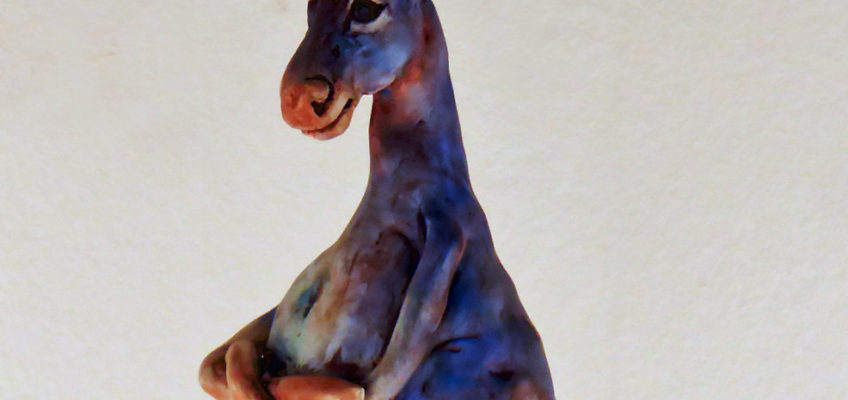In Sweden, polymer clay is mostly used as something children play with. In the stores the children’s brands are FIMO Soft or FIMO Kids. Therefore, I import the clay that I use, which is in a quality called FIMO Professional, and which has some other characteristics than the very soft clay that is intended for small children’s hands.
What characterizes polymer clay is that it comes in colors. Sculpting in polymer clay is thus like painting three-dimensional. It places great demands upon you as an artist, and that’s also what I think is so interesting and inspiring. I use a color scheme called FIMO True Colors with pure colors (basically RGB and CMYK colors at the same time) that provide unlimited possibilities to create all nuances you want. In addition, you can mix, for example, micapulver (give pearllike shine), ordinary glitter, or black pepper (I often use it when I want to mimic stone) to achieve different effects.
With polymer clay you can also have great control over how the colors mix with each other or not. For example, you can mix to just about any nuance you want, just like with watercolor or oil paints. At the same time, through a special technique – skinner blend – you can make tones in the same clay from one color to another. But you can also choose to create distinctive patterns in different sizes without the different colors of clay mixing with each other in so-called canes.
Another big advantage is that you do not need any high-temperature kiln, you can cure the clay in a regular oven. I usually cure at 130 degrees celcius. In addition, the clay can withstand repeated cures, so you can start with a basic shape that you first cure and then continue to build on details in several rounds.
And finally – if you want, you can paint the finished clay with different types of colors, such as acrylic paint. On clay that has not been cured, it is very good to paint with soft pastels.


Lämna ett svar